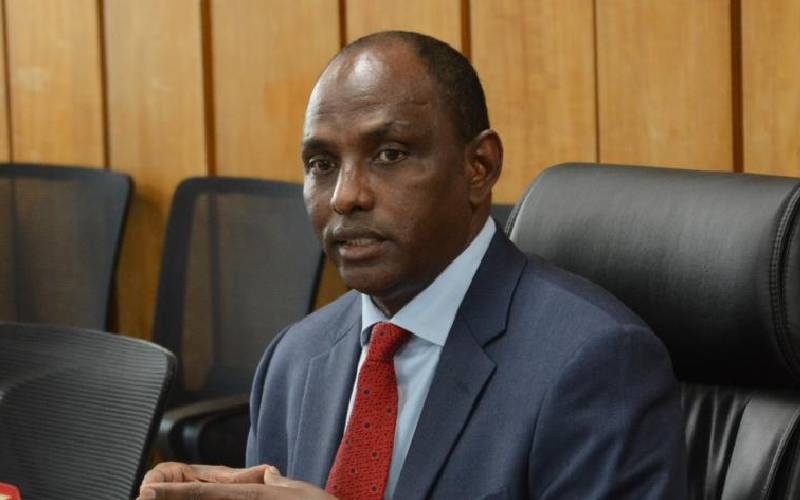 Treasury Cabinet Secretary Ukur Yatani at a past event. [File]
Treasury Cabinet Secretary Ukur Yatani at a past event. [File]
The International Monetary Fund (IMF) is now less optimistic about the rebounding of the Kenyan economy after it revised growth for next year down to 4.7 per cent from an earlier 6.1 per cent.
In its latest World Economic Outlook, the IMF changed the outlook for growth in 2021, citing a rocky recovery period.
The revision is largely explained by the second wave of Covid-19 infections that has rocked different parts of the country even after the government reopened the economy encouraged by an apparent flattening of the curve.
The global lender maintained its forecast for this year’s growth at one per cent as the country continues to grapple with the adverse effects of the coronavirus disease.
Since the country announced its first case of Covid-19 on March 13, the economy has taken a beating with businesses shutting down and millions of people losing their sources of income.
Read More
- 1 Debt spirals to Sh7tr as Kenya borrows Sh374b in two months
- 2 Man seeks CBK help over fictitious bank dealings, CRB listing
- 3 Lockdowns key to recovery - IMF
- 4 IMF approves aid for world's 28 poorest countries
Although economic activities have begun to resume following the easing of containment measures, forecasters have predicted a tough 2020, with most of them expecting gross domestic product (GDP), which is the country’s total output, to perform dismally compared to last year’s growth of 4.7 per cent.
Other risks
Further, smooth recovery might also be disrupted by a second wave of infections, with the latest figures from the Ministry of Health showing a jump in new cases.
A Central Bank of Kenya (CBK) perception survey that polled several chief executives found that while the captains of industry were optimistic about the economy picking up in the next two months, they were also wary of a second wave, among other risks.
Some of these included uncertainties around the pandemic, loss of jobs in the private sector due to business closures and a slow post-Covid-19 recovery of some key economic sectors such as tourism.
On its part, the Treasury expects the Kenyan economy to grow by 2.6 per cent this year and rebound to 5.3 per cent in 2021.
Last week, the Kenya National Bureau of Statistics (KNBS) delayed the release of GDP figures for the second quarter of 2020, results that would have given a clearer picture of the damage done by the pandemic on the economy.
“The delay has been occasioned by late submission of data necessary for the compilation as a result of Covid-19-related challenges,” said Collins Omondi, who is acting for the statistics agency’s director general.
He, however, assured the public that the report would be disseminated at the earliest opportunity once the process is completed.
The Central Bank has previously said the business environment will improve in the third quarter of the year, with leading economic indicators pointing to strong recovery after the disruptions witnessed in the second quarter of 2020.
“This improvement and resilience is supported by agricultural production, increased activity in key sectors, particularly services with the easing of Covid-19 restrictions, normalisation of exports, and government interventions to mitigate the impact of the pandemic,” said CBK in a statement.
In the second quarter of this year, more than 1.7 million Kenyans lost their jobs, with tax collection under-performing due to limited commercial activities.
Economic activity picked up after the president eased some measures, including allowing for the reopening of restaurants after months of closure, and easing travel restrictions across hotspot counties.
The president also reviewed the dusk-to-dawn curfew, which now runs from 11pm to 4am, allowing for more economic activity.




No comments :
Post a Comment